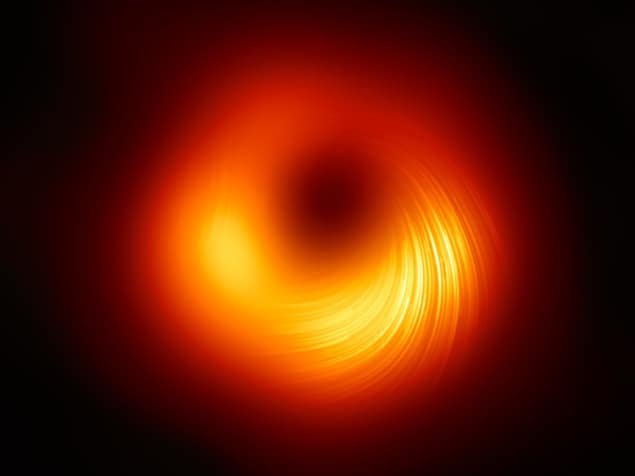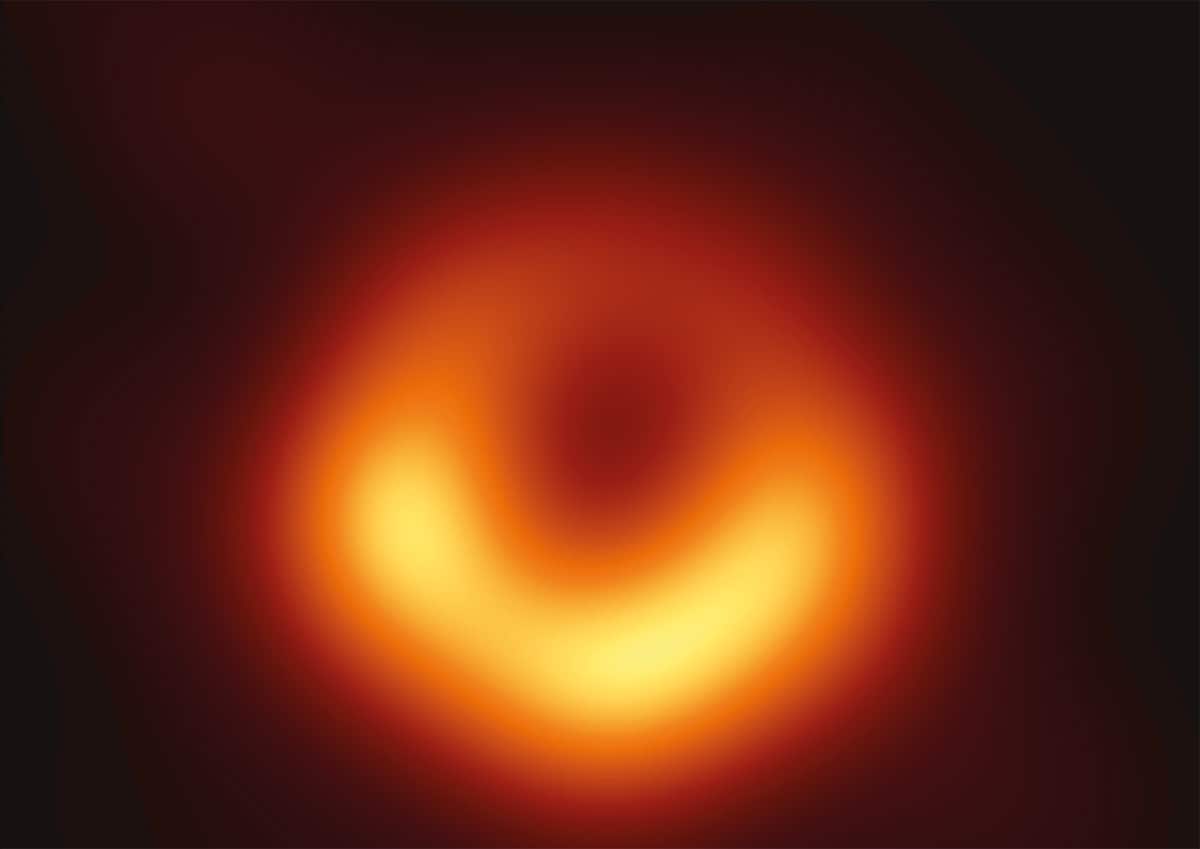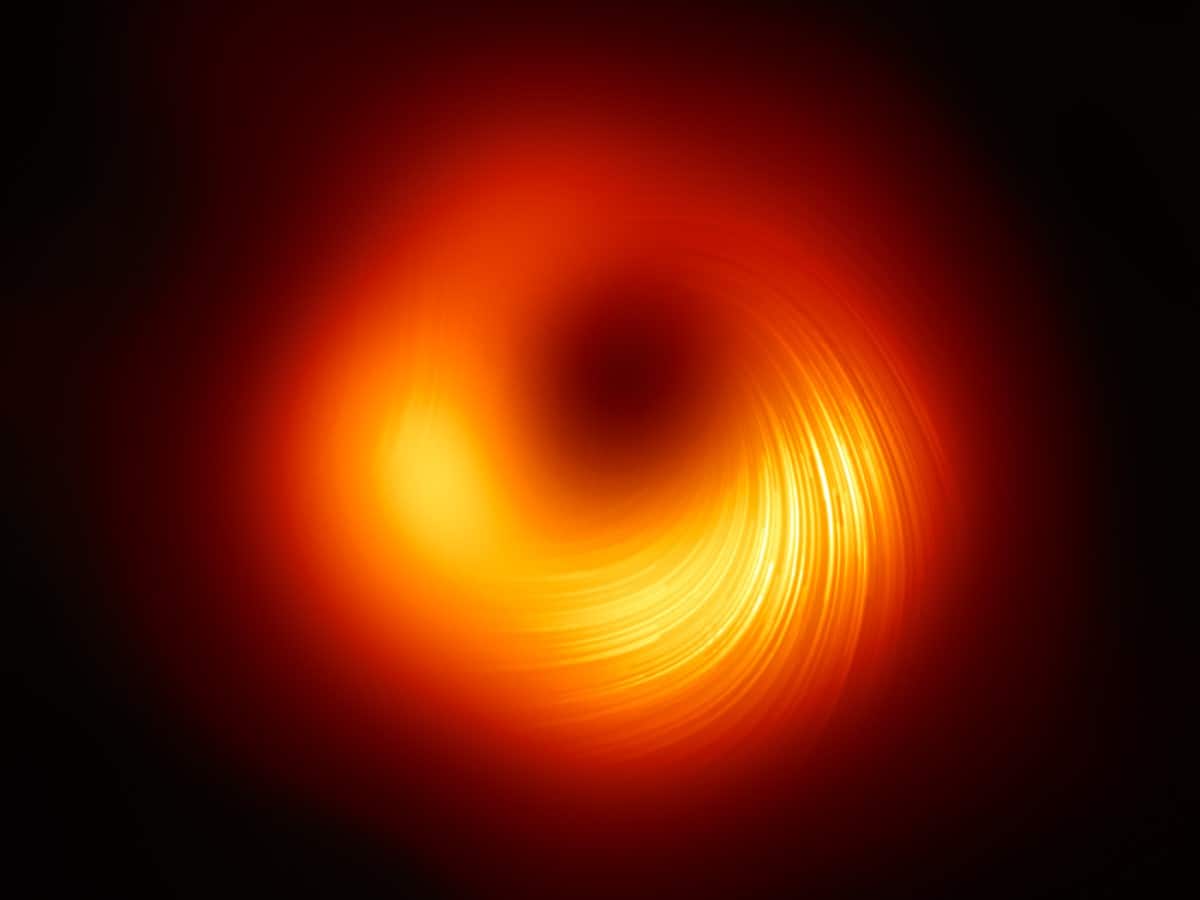
A new image showing magnetic fields surrounding the supermassive black hole M87* has been created by scientists working on the Event Horizon Telescope (EHT). The magnetic structure was mapped by measuring the polarization of the light emitted by matter in the hot region around the black hole. Understanding the magnetic properties of that region could provide important insights into how powerful jets of radiation and matter are emitted by some black holes.
In 2019 the EHT made history by capturing the first image of the shadow of a black hole. This is a dark region surrounding a black hole that is expected to be about three times the diameter of the black hole’s event horizon, which is the point beyond which even light cannot escape a black hole. The supermassive black hole is called M87* and is located at the centre of a galaxy about 55 million light-years away. From the image, the team worked out that M87* has a mass of about 6.5 billion times that of the Sun. Back in 2012, astronomers using the EHT were also able to see the base of a powerful jet that blasts out about 5000 light-years from M87*.
Now, scientists working on the EHT have analysed the polarization of light from the bright region surrounding the shadow. There, some matter is being sucked into the black hole while other matter is being blasted out in jets. How these jets are formed is a matter of debate amongst astrophysicists but understanding the magnetic fields near supermassive black holes could provide important clues.
Strongly magnetized gas
The region surrounding the shadow is hot and violent region and therefore large amounts of light are created as matter is accelerated. If strong magnetic fields are present, then the emitted light will be polarized. Using models to analyse the observed polarization, EHT scientists have concluded that only the presence of a strongly magnetized gas can explain their observations.
Team member Monika Mościbrodzka at Radboud University in the Netherlands describes the measurements as “the next crucial piece of evidence to understand how magnetic fields behave around black holes, and how activity in this very compact region of space can drive powerful jets”.

First images of a black hole unveiled by astronomers in landmark discovery
Her colleague Jason Dexter at the University of Colorado Boulder adds, “the observations suggest that the magnetic fields at the black hole’s edge are strong enough to push back on the hot gas and help it resist gravity’s pull. Only the gas that slips through the field can spiral inwards to the event horizon.”
The data used to create the image were acquired in 2017 and Iván Martí-Vidal at the University of Valencia spoke to the challenge of creating the image: “unveiling this new polarized-light image required years of work due to the complex techniques involved in obtaining and analysing the data”.
The research is described in an observational paper and a theory paper, which are both published in The Astrophysical Journal Letters.
